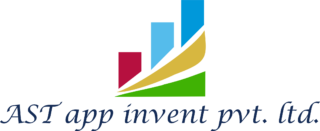Laravel Web Development
Laravel is a popular PHP framework used for web development. It follows the MVC (Model-View-Controller) architectural pattern and provides a clean and elegant syntax for building applications. Laravel offers a range of features that make development faster and more efficient, such as.
Sure! Here’s a deeper dive into Laravel web development, highlighting some key concepts, tools, and features that can help you build robust, scalable, and efficient web applications:

1. Routing in Laravel
Routing in Laravel defines how requests to your application are handled. It’s simple yet flexible. Routes are typically defined in the routes/web.php file for web routes or routes/api.php for API routes.
// Example of a simple route
Route::get('/home', [HomeController::class, 'index']);
Laravel also supports route parameters, named routes, route groups, and more advanced features like route caching for better performance.
2. Middleware
Middleware are filters that sit between the request and the response. They are used for things like authentication, logging, CORS handling, etc. You can write your own or use Laravel’s built-in middleware.
Route::get('/profile', function () {
// Only authenticated users may access this route
})->middleware('auth');
3. Eloquent ORM
Eloquent is Laravel’s built-in Object Relational Mapper (ORM), which makes database interactions smoother. You can define models for your database tables and then query them using PHP syntax.
Defining Models:
class Post extends Model
{
protected $fillable = ['title', 'content'];
}
Querying Data:
// Retrieve all posts
$posts = Post::all();$post = Post::find(1);
$posts = Post::where(‘title’, ‘like’, ‘%Laravel%’)->get();
Eloquent also provides relationships (one-to-one, one-to-many, many-to-many), so you can easily manage database associations.
4. Blade Templating Engine
Blade is Laravel’s templating engine, which allows you to write cleaner views. You can include dynamic data in your HTML views and use control structures like loops and conditionals.
Example:
// In a Blade view (resources/views/welcome.blade.php)
<h1>Hello, {{ $name }}</h1>
Blade also supports layouts, sections, and includes to keep your views organized.
// Layout file: resources/views/layouts/app.blade.php
<html>
<body>
@yield('content')
</body>
</html>@extends(‘layouts.app’)
<h1>Welcome to Laravel</h1>
@endsection
5. Database Migrations & Seeding
Laravel uses migrations to version control your database schema, allowing you to easily create, modify, and share the database structure across different environments.
Migration Example:
// Creating a posts table
php artisan make:migration create_posts_table --create=postsSchema::create(‘posts’, function (Blueprint $table) {
$table->id();
$table->string(‘title’);
$table->text(‘content’);
$table->timestamps();
});
Seeding:
You can also seed data into your database, useful for testing or initial data setup.
// Running seeders
php artisan db:seed
6. Authentication and Authorization
Laravel has built-in features for handling user authentication. You can use the php artisan make:auth command (before Laravel 7) or implement it manually with Laravel’s authentication scaffolding in later versions.
Basic Authentication:
- Login, registration, and password reset functionality is provided out of the box.
- Middleware like
authensures that only authenticated users can access certain routes.
Authorization: Laravel provides a simple way to define user roles and permissions using Gates and Policies.
// Gate Example:
Gate::define('view-posts', function ($user) {
return $user->role == 'admin';
});
7. Task Scheduling
Laravel’s task scheduler allows you to automate repetitive tasks, such as sending emails, clearing cache, or running database cleanups, without needing to configure a cron job manually.
// In app/Console/Kernel.php
$schedule->command('inspire')->hourly();
8. Queues and Jobs
Queues allow you to delay the execution of time-consuming tasks, like sending emails, so they don’t slow down the user experience.
Example of a Job:
php artisan make:job SendWelcomeEmail
The job class can then handle the logic, and it can be dispatched to a queue for background processing.
SendWelcomeEmail::dispatch($user);
Laravel supports different queue backends like Redis, SQS, and database-based queues.
9. Testing
Laravel makes testing a priority, providing built-in PHPUnit integration. You can write tests for your application to ensure everything works as expected.
// Example of a basic test
public function testBasicExample()
{
$response = $this->get('/');
$response->assertStatus(200);
}
Laravel provides a rich set of helper methods for testing controllers, database interactions, and much more.
10. API Development with Laravel
Laravel is also a great framework for building RESTful APIs. The built-in features like routing, request validation, authentication (via Passport or Sanctum), and responses make API development straightforward.
You can create routes that respond with JSON data:
Route::get('/api/posts', function () {
return response()->json(Post::all());
});
11. File Storage
Laravel’s filesystem abstraction allows you to easily manage files, whether they’re stored locally, in the cloud (S3, Google Cloud), or on other services.
// Storing a file locally
$request->file('photo')->store('public/photos');Storage::get(‘public/photos/image.jpg’);
12. Laravel Ecosystem
Laravel has a rich ecosystem that complements the framework and speeds up development:
- Laravel Forge: A service to deploy, manage, and provision your Laravel applications on cloud servers.
- Laravel Envoyer: A tool for zero-downtime deployment.
- Laravel Horizon: A beautiful dashboard to monitor your queues.
- Laravel Nova: A powerful admin panel for managing your data.
13. Laravel Livewire
Livewire is a full-stack framework for Laravel that allows you to build dynamic interfaces without leaving the comfort of Blade. It allows you to add interactivity to your application without relying on complex JavaScript.
// Livewire component example
<div>
<button wire:click="increment">Increment</button>
<h1>{{ $count }}</h1>
</div>
Summary
Laravel is an excellent framework for building modern web applications, providing a set of tools and features that make it easier to manage common tasks like routing, authentication, database management, and more. With an active community and extensive documentation, Laravel continues to evolve and maintain its popularity.


